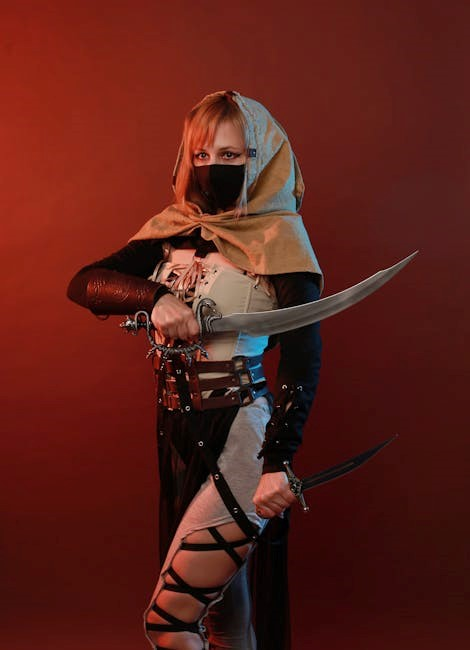The Tome of Battle: The Book of Nine Swords introduces a revolutionary martial system for D&D 3.5‚ blending combat with magical mechanics through the Sublime Way.
1.1 Overview of the Tome of Battle
The Tome of Battle: The Book of Nine Swords is a supplementary rulebook for Dungeons & Dragons 3.5 Edition‚ introducing a unique martial combat system. It focuses on the Sublime Way‚ a path of martial excellence blending physical prowess with mystical energy. The book introduces nine distinct disciplines‚ each representing a different approach to combat‚ from relentless offense to precise control. These disciplines‚ such as Iron Heart and Shadow Hand‚ provide characters with extraordinary combat maneuvers. The Tome of Battle also features three new base classes—the Crusader‚ Swordsage‚ and Ruby Knight Vindicator—each embodying different aspects of the Sublime Way. This book revolutionized D&D combat by offering a deeper‚ more tactical approach to martial characters‚ distinguishing it from traditional spellcasting-focused classes. Its innovative mechanics and lore have made it a beloved resource among players and GMs alike‚ even inspiring conversions to later editions like 5th Edition.

1.2 Historical Context and Development
The Tome of Battle: The Book of Nine Swords was published in 2006 by Wizards of the Coast for Dungeons & Dragons 3.5 Edition. It was designed to expand the game’s martial combat system‚ offering a more nuanced and tactical approach for fighters and other martial classes. The book was created by a team of designers who sought to balance the often-overpowered nature of spellcasting classes by introducing a system of martial maneuvers and stances.
Drawn from martial arts and mythical concepts‚ the Sublime Way and its nine disciplines were inspired by real-world combat styles and fictional martial traditions. This book marked a departure from traditional D&D mechanics‚ emphasizing strategy and flair in combat. Its release was well-received by fans‚ leading to community-created content and conversions for later editions.
The Book of Nine Swords and Its Significance
The Book of Nine Swords revolutionized D&D 3.5 Edition by introducing the Sublime Way‚ a system of martial maneuvers and stances that added depth to combat.
2.1 The Concept of the Sublime Way
The Sublime Way is a martial philosophy introduced in the Tome of Battle‚ blending physical prowess with a magical-like system of maneuvers and stances. It emphasizes discipline and precision‚ allowing warriors to perform extraordinary feats in combat. This system is divided into Nine Disciplines‚ each representing a unique style of combat‚ such as the offensive Iron Heart or the defensive Stone Dragon. By mastering these disciplines‚ characters can execute powerful techniques‚ creating a seamless fusion of strategy and skill. The Sublime Way offers a fresh approach to martial combat‚ elevating it beyond mere brute force and into an art form.
2.2 The Nine Disciplines Explained
The Tome of Battle details the Nine Disciplines‚ each representing a unique martial tradition within the Sublime Way. These disciplines—such as Iron Heart‚ Stone Dragon‚ and White Raven—offer distinct combat styles‚ from devastating offensive strikes to tactical defensive maneuvers. Players can choose disciplines that align with their character’s persona‚ enabling them to perform extraordinary feats like disarming foes or striking multiple enemies at once. The disciplines are organized into maneuvers and stances‚ providing a structured yet flexible system for martial excellence. This variety allows characters to adapt to any combat scenario‚ making the Sublime Way a versatile and dynamic approach to warfare in D&D 3.5.

Core Classes in the Tome of Battle
The Tome of Battle introduces three core classes: the Crusader‚ Swordsage‚ and Ruby Knight Vindicator. Each class embodies unique martial traditions‚ blending combat prowess with divine or arcane elements.
3.1 The Crusader Class

The Crusader is a divine martial class‚ blending combat prowess with healing and support abilities. They channel divine energy to execute powerful maneuvers‚ such as Healing Strike and Smite. Crusaders are versatile warriors‚ excelling in both offense and defense. Their abilities emphasize teamwork‚ making them valuable party members. With access to the Sublime Way disciplines‚ they can perform extraordinary feats in battle. The Crusader’s class features include Divine Grace‚ Maneuvers‚ and Stances‚ allowing them to adapt to various combat situations. Their divine focus also grants them unique abilities tied to their religion or martial order‚ making them a standout class in the Tome of Battle.
3.2 The Swordsage Class
The Swordsage is a martial class that embodies the mastery of the Sublime Way‚ a philosophical and combat system rooted in ancient traditions. They are versatile warriors‚ capable of executing intricate maneuvers and adapting to any situation. Unlike other classes‚ Swordsages rely on their intelligence score to perform martial maneuvers‚ blending mental discipline with physical prowess. Their abilities include access to the Nine Disciplines‚ such as Stone Strike and Mountain Hurricane‚ which allow them to perform extraordinary feats in combat. Swordsages also gain bonuses to AC and initiative‚ making them highly mobile and elusive. This class is ideal for players seeking a balance of strategy and dynamic martial combat.
3.3 The Ruby Knight Vindicator Class
The Ruby Knight Vindicator is a prestige class within the Tome of Battle‚ blending martial prowess with divine or arcane power. Hailing from the Temple of Nine Swords‚ these warriors are deeply connected to the Sublime Way‚ using their abilities to protect allies and vanquish foes. Vindicators can channel energy to heal or harm‚ and their martial maneuvers often have enhanced effects. They also gain access to spellcasting‚ combining their combat skills with magical versatility. The class is ideal for players seeking a balance between martial and magical capabilities‚ making them formidable champions on the battlefield. Their role as guardians and enforcers of justice is central to their identity in the game.
Martial Orders and Their Role
Martial orders in the Tome of Battle serve as organizations fostering mastery of the Sublime Way‚ often tied to religious or philosophical causes‚ shaping warriors’ identities and purposes.
4.1 The Collapse of the Temple of Nine Swords
The Temple of Nine Swords‚ once the epicenter of martial excellence‚ collapsed under mysterious circumstances‚ scattering its teachings and disciples. This event marked the end of a centralized authority on the Sublime Way‚ leading to the rise of independent martial orders. These groups‚ often aligned with religious or philosophical beliefs‚ adapted the teachings of the Nine Swords to fit their doctrines. The collapse also led to the fragmentation of the disciplines‚ with some becoming lost or corrupted. Despite this‚ the legacy of the temple endures‚ as modern martial orders strive to preserve and expand upon its principles in the ever-evolving world of D&D.
4.2 Modern Martial Orders in D&D
Modern martial orders in D&D have evolved from the remnants of the Temple of Nine Swords‚ blending ancient traditions with new philosophies. These organizations‚ often tied to specific classes like the Crusader or Swordsage‚ emphasize mastery of the Nine Disciplines and adherence to a code of honor. Each order has its own distinct culture‚ ranging from monastic societies to knightly brotherhoods. Players can join these orders to gain access to unique abilities‚ prestige classes‚ and storytelling opportunities. The orders also serve as hubs for character development‚ fostering camaraderie and conflict alike. Their influence extends beyond combat‚ shaping the political and social fabric of the game world.

Legacy and Community Impact
The Tome of Battle revolutionized D&D 3.5 with its martial combat system‚ inspiring countless adaptations and fan conversions to 5th Edition‚ ensuring its enduring popularity and relevance.
5.1 Community Reception and Reviews
The Tome of Battle: The Book of Nine Swords received widespread acclaim for its innovative martial combat system‚ introducing the Sublime Way and nine disciplines. Fans praised its unique blend of magic and melee‚ while critics highlighted its depth and balance. The Crusader‚ Swordsage‚ and Ruby Knight Vindicator classes were particularly celebrated for their versatility. Online forums and reviews showcased a passionate community‚ with many hailing it as a game-changer for martial characters in D&D 3.5. Its influence endured‚ inspiring homebrew adaptations and official conversions‚ cementing its legacy as a cornerstone of martial excellence in the game.
5.2 Conversions to 5th Edition D&D
The Tome of Battle has seen extensive community-driven conversions to 5th Edition D&D‚ adapting its martial system for modern play. Fans have recreated the Sublime Way‚ translating its disciplines into 5e mechanics. Homebrew classes like the Crusader and Swordsage have been reimagined‚ preserving their unique flavor. The nine disciplines‚ such as Iron Heart and Setting Sun‚ have been adapted as feats or class features. These conversions maintain the original’s depth while aligning with 5e’s action economy. Official support is limited‚ but community efforts ensure the Book of Nine Swords remains relevant‚ offering fresh tactical options for martial enthusiasts in the latest edition.
The Tome of Battle: The Book of Nine Swords remains a cornerstone of martial excellence in D&D‚ offering a unique blend of strategy and flair that endures.
6.1 Final Thoughts on the Tome of Battle
The Tome of Battle: The Book of Nine Swords has left an indelible mark on D&D‚ offering a fresh perspective on martial combat and strategy. Its innovative system‚ blending physical prowess with a form of “magic‚” has inspired countless players and DMs. The Sublime Way and its nine disciplines have redefined how martial classes are perceived‚ adding depth and complexity to gameplay. The book’s legacy is evident in its enduring popularity and the community’s efforts to adapt its content for modern editions. It remains a testament to the creativity and richness of the D&D universe‚ continuing to inspire new generations of adventurers and strategists alike.




